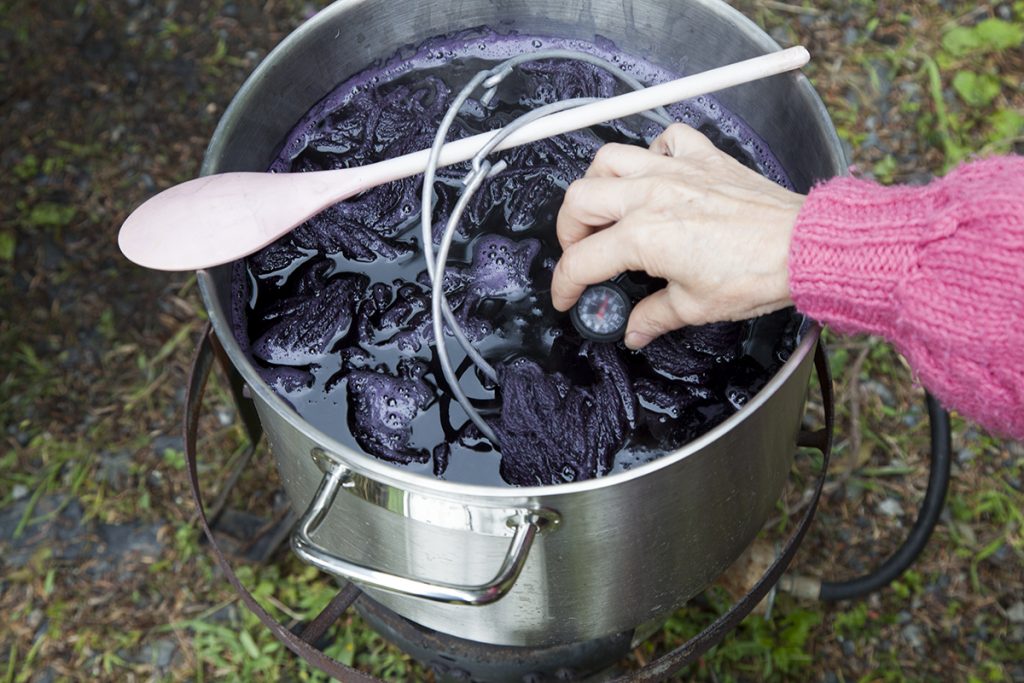
This week: Pungent wool and husbands, and ratios of extract to fabric.
Every week, we are emailed with questions from our natural dye community asking simple and complex questions that we thought might be worth sharing. Of course, all of your burning questions are answered by natural dyer in chief, Kathy Hattori, Founder of Botanical Colors.
My husband always complains about the smell of my mordanted yarn that I hang in our shared office, claiming that it stinks. While I do notice a smell, I always just considered it to be the smell of wool and it doesn’t bother me. I mentioned to him that I’d double check with you to make sure it’s not something I’m doing wrong. I feel like the smell dissipates after several days but he claims it’s still very much there! LOL. I use alum/cot only for mordants, but what I think he might be smelling is the actual wool. Could it be something else? I’ve started using a neutral pH soap to wash my dyed yarns, but what about for the ones that are waiting to be dyed but are already mordanted?
I think the wool smells a bit sulfuric at times, and I think it’s from the reaction of aluminum sulfate, water and heat, and I also read that wool fiber does contain a small amount of sulfur as well. That may be what your husband is smelling. Ask him if it smells like overboiled eggs – if he’s sensitive to that odor, he may be picking up on it.
When reading over your page about using powdered dye extracts, I see information that is very helpful, particularly the chart about how much extract to use for 1 lb of fabric. However, I’m wondering how much water to use for dyeing that 1 lb of fabric. If you have time, I’d love to know. Thank you very much !!
As a general rule, you can start with a ratio of 1:20, meaning for a pound of fabric then, use 20 lbs of water. Since a gallon of water weighs 8 lbs, you are looking at 2.5 gallons of water (or 10 quarts/liters) per pound of fabric. It is totally possible to adjust this amount to suit your needs and your dye pot. A little less water might result in a slightly darker shade (may be imperceptible), and a lot more water will result in a lighter shade (this is often more apparent). Of course, keep in mind that crowding a dye pot may result in uneven dyeing, which some dyers love and others abhor.
See chart here and click on the actual chart to enlarge.
